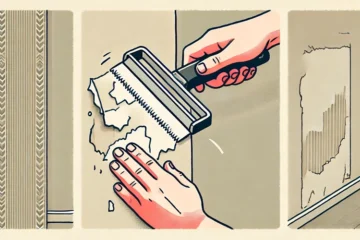Wallpapering Design Tips

The majority of wallpapering tools can be found in a well-stocked homeowner’s toolbox. However, there are several specialist instruments that can make the task go much more smoothly. Here’s what you’ll need, from the everyday to the unusual:
- To have an adequate supply of clean water near at hand, use a paint pail or bucket.
- To wipe wall surfaces prior to papering, remove excess glue, and keep tools clean, use a large clean sponge.
- Work table: a big flat surface for rolling out and cutting wallpaper, either store-bought or homemade (of plywood on sawhorses).
- Apply latex primer-sealer to the wall surface before hanging paper, or place adhesive on the back of unpasted paper with a paint roller and tray.
- To draw plumb and level lines, use a 4′ level.
- To draw long, straight lines from the ceiling to the floor or across an entire wall or ceiling, use a chalk line and chalk.
- Pre-pasted wallpaper is dipped in water before being hung on the wall.
- For directing cuts and establishing layout lines on the wall, use a 4′ metal or plastic straightedge.
- To cut mitered joints in wallpaper borders or around switch and receptacle cover plates, use a 45° plastic drafting square.
- Smoothing brushes: For vinyl sheets, use short-nap brushes; for classic and delicate grass papers, use long-nap brushes.
- Paste brush: Use this to apply wallpaper paste to the backs of unpasted papers.
- To hold paper flat while trimming it with a razor knife or utility knife, use a 10″ drywall finishing knife.
- To make wallpaper cuts, use a razor knife or a utility knife.
- Extra knife blades: Replace your dull knife blade as soon as possible.
- To create smooth cuts in wallpaper without the need of a straightedge guide, use wallpaper scissors.
- To flatten seams between wallpaper pieces, use a seam roller.
- To carefully flatten wallpaper and drive out air bubbles trapped between the paper and the wall, use a plastic smoothing tool.
- Punch holes in wallpaper that is being removed with a perforation tool (so that wallpaper-removing solution can reach the adhesive on the back of the paper)


